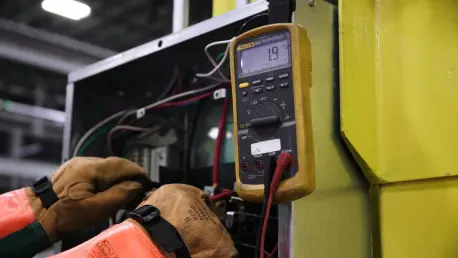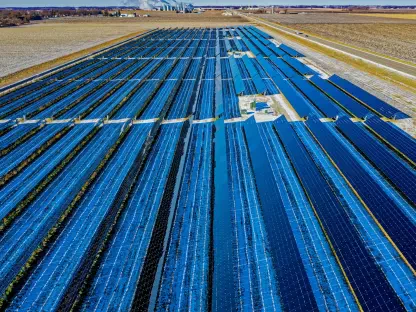The Low Voltage Protection Market is poised for a remarkable ascent, with projections estimating its value to reach an impressive $25.5 billion by 2032, driven by a steady compound annual growth rate (CAGR) of 5.8% over the forecast period from 2026 onward. This surge reflects a growing global emphasis on safety, reliability, and energy efficiency in electrical systems operating below 1,000 volts, which are critical to preventing faults like overcurrent and short circuits. As urbanization reshapes skylines and industrial automation transforms manufacturing, the demand for advanced protection and control solutions has never been more urgent. From safeguarding industrial machinery to ensuring stable power in residential settings, these systems are becoming a cornerstone of modern infrastructure. Drawing on comprehensive industry analysis, this exploration delves into the forces propelling this market forward, highlighting key trends, regional dynamics, and application areas that are shaping its trajectory. The stage is set for a deep dive into a sector integral to the future of electrification.
Forces Fueling Market Expansion
The rapid growth of the Low Voltage Protection Market is underpinned by a confluence of powerful drivers that are reshaping the electrical landscape across the globe. Urbanization, particularly in developing nations, is a primary catalyst, as expanding cities and infrastructure projects demand robust electrical systems to power new buildings, transportation networks, and public utilities. This trend is amplified by industrial automation, where the principles of Industry 4.0 are pushing manufacturers to adopt sophisticated protection mechanisms to maintain seamless operations and minimize downtime caused by electrical failures. Additionally, the exponential rise of data centers, fueled by the digital economy, underscores the need for uninterrupted power and system reliability. Regulatory frameworks worldwide are tightening, mandating stricter safety and energy efficiency standards that compel industries and households alike to invest in cutting-edge solutions. These combined forces create a dynamic environment where demand for low voltage protection systems continues to soar.
Another significant factor propelling this market is the integration of advanced technologies such as the Internet of Things (IoT) and digitalization into electrical systems. These innovations enable real-time monitoring, predictive maintenance, and smarter control, transforming traditional protection equipment into intelligent solutions. Smart grids, for instance, rely heavily on such advancements to optimize energy distribution and prevent outages, while data centers benefit from continuous oversight to protect critical operations. Beyond technology, the global push for sustainability is encouraging the adoption of systems that reduce energy waste, aligning with environmental goals. Governments and organizations are increasingly recognizing the importance of safeguarding electrical infrastructure not just for safety, but also for economic stability, as disruptions can lead to significant losses. This multifaceted growth landscape highlights how interconnected societal, technological, and regulatory trends are driving the market toward its projected valuation by 2032.
Product and Application Breakdown
When examining the Low Voltage Protection Market, segmentation by product type reveals distinct areas of strength and potential. Protection equipment stands as the dominant category, holding the largest share due to its essential role in preventing electrical faults and ensuring compliance with safety regulations. This segment is particularly vital in residential and industrial settings where the risk of overcurrent or short circuits can have severe consequences. Monitoring devices, meanwhile, are experiencing rapid growth, driven by their importance in environments like smart grids and data centers, where real-time data on electrical parameters is critical for maintaining stability. Switching equipment, though not the fastest-growing segment, remains a key component for operational control, facilitating efficient power management. This diverse product mix illustrates how different technologies cater to specific needs within the broader market, each contributing to overall growth in unique ways.
Turning to applications, the industrial sector emerges as the leading area of demand, reflecting the extensive reliance on electrical systems in manufacturing and processing facilities. Thousands of machines and systems require consistent protection to avoid costly interruptions, making advanced control solutions indispensable. In contrast, the residential segment is gaining momentum as urbanizing regions see a rise in household electrification, coupled with growing consumer awareness of safety and energy conservation. Homeowners are increasingly investing in systems that protect against hazards while optimizing power usage. The commercial sector, encompassing offices, retail spaces, and other business environments, also plays a role, though its contribution is less pronounced compared to industrial and residential applications. This varied application spectrum underscores the market’s broad relevance, touching nearly every facet of modern life from factories to family homes, and highlights the widespread need for reliable low voltage solutions.
Global Growth Patterns and Regional Insights
Geographically, the Asia-Pacific region is the undeniable leader in the Low Voltage Protection Market, a position expected to hold strong through 2032 due to unparalleled growth drivers. Countries like China and India are at the forefront, with rapid urbanization and large-scale infrastructure projects creating a massive need for electrical protection systems to support expanding cities and transportation networks. The region’s focus on manufacturing automation and smart grid initiatives further accelerates demand, positioning it as the fastest-growing market globally. This dominance is not just a matter of scale but also of strategic investment in modernizing electrical infrastructure to meet the needs of booming populations and economies. As a result, Asia-Pacific serves as a bellwether for trends that could influence other regions, showcasing how development and technology converge to fuel market expansion.
Elsewhere, North America represents a significant market, driven by the proliferation of data centers and stringent safety regulations that mandate the use of advanced protection systems. The region’s emphasis on technological innovation ensures steady growth, as businesses prioritize reliability to support critical digital operations. Europe follows a similar path, with growth rooted in regulatory frameworks promoting energy efficiency and safety, alongside a strong push for sustainable infrastructure. Other areas, such as the Middle East, South America, and Africa, are also witnessing progress, albeit at a slower pace, often tied to infrastructure development and emerging industrial needs. These regional disparities highlight a global market with varied dynamics, where economic conditions, policy priorities, and technological adoption rates shape distinct growth patterns. Together, these insights paint a picture of a market with widespread relevance, yet unique challenges and opportunities in each corner of the world.
Path Forward for Industry Stakeholders
Reflecting on the trajectory of the Low Voltage Protection Market, it’s evident that the journey toward a $25.5 billion valuation by 2032 has been shaped by a blend of innovation, necessity, and global trends. The relentless pace of urbanization and industrial automation has laid a foundation for demand, while technological advancements like IoT integration have elevated the capabilities of protection systems. Regions like Asia-Pacific have spearheaded growth with bold infrastructure initiatives, while North America and Europe have reinforced the market through regulatory rigor and digital expansion. This historical momentum offers a clear lesson: adaptability and foresight are key to navigating a rapidly evolving landscape.
Looking ahead, stakeholders must focus on actionable strategies to sustain this growth. Investing in research and development to enhance smart, energy-efficient solutions will be crucial, especially as digitalization deepens. Collaboration with policymakers to align with safety and sustainability mandates can unlock new opportunities, particularly in emerging markets. Additionally, tailoring products to meet the specific needs of industrial, residential, and commercial applications will ensure broader market penetration. By anticipating regional shifts and embracing technological progress, the industry can build on past achievements to secure a resilient and innovative future.









